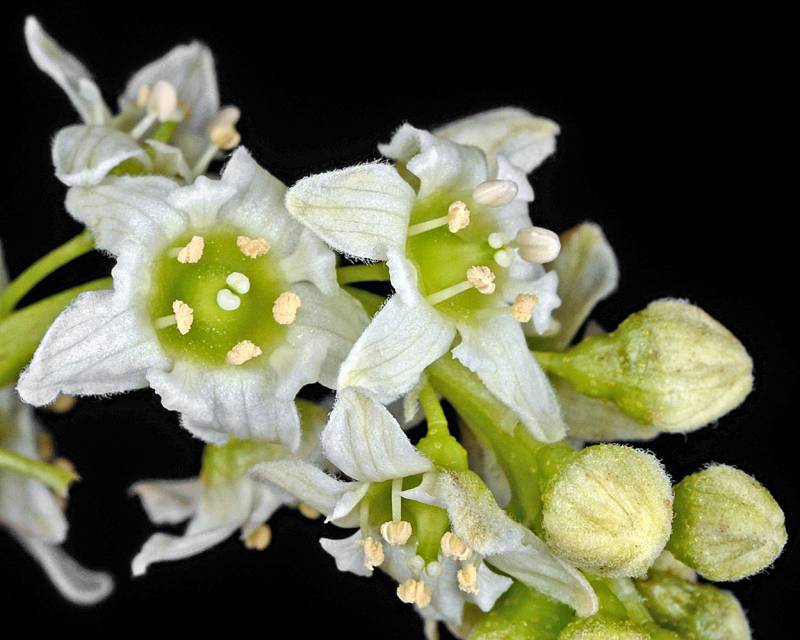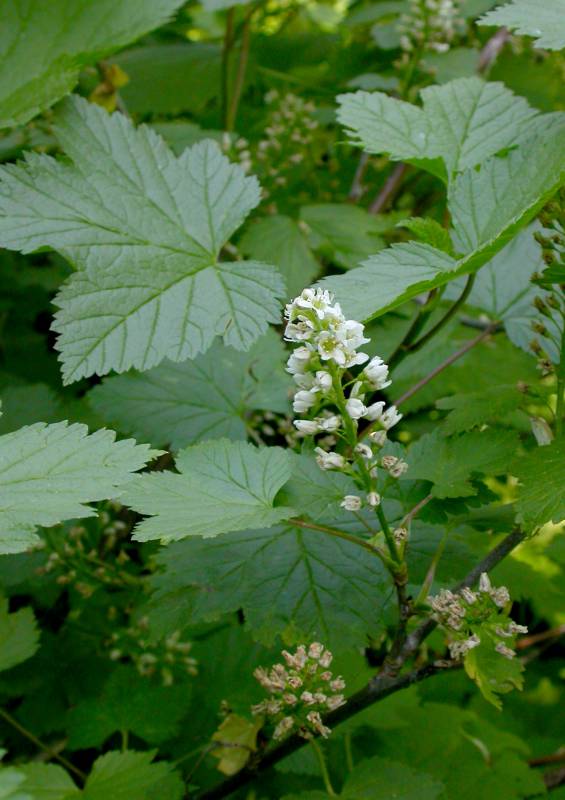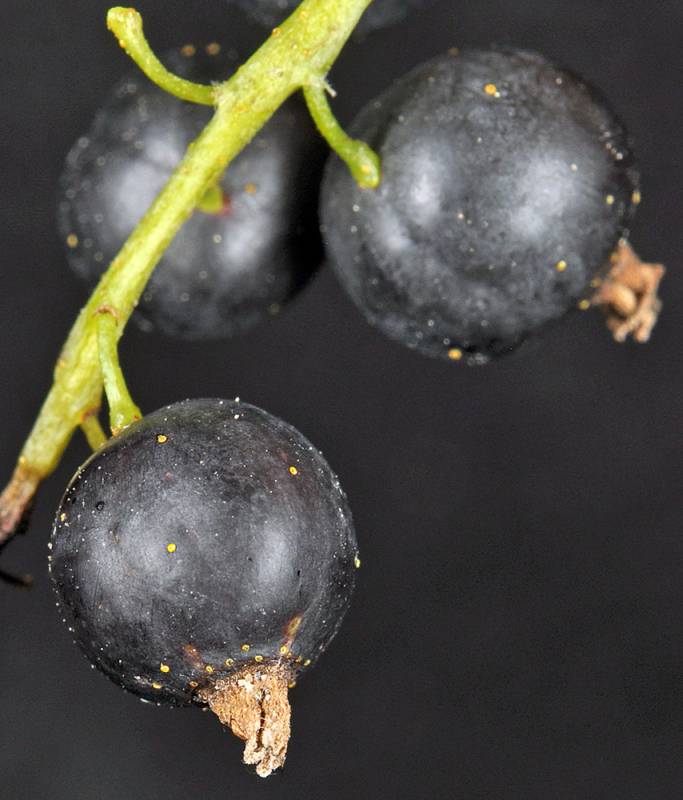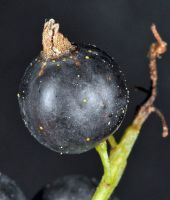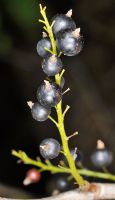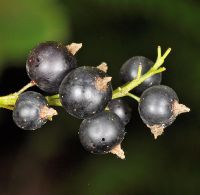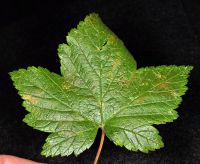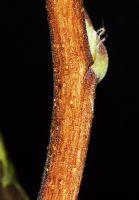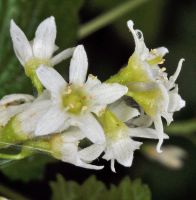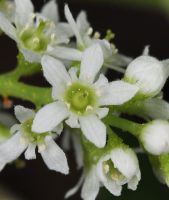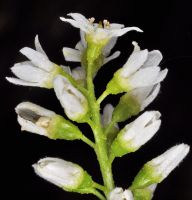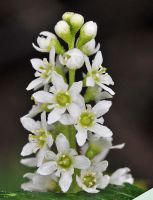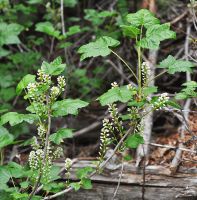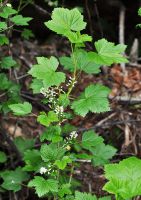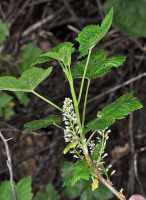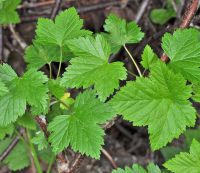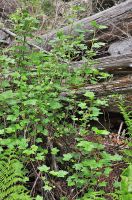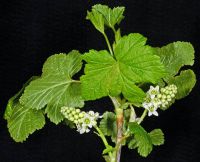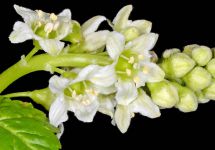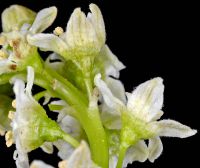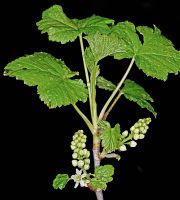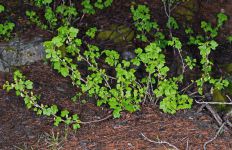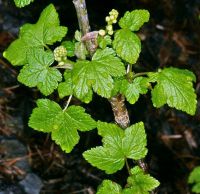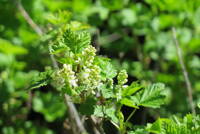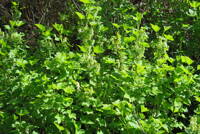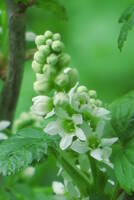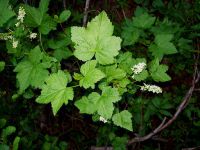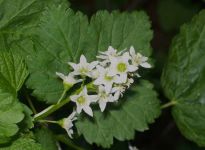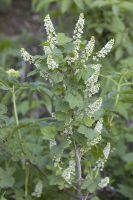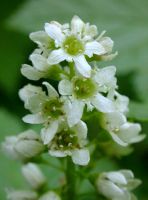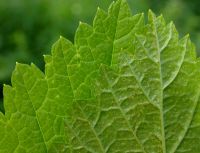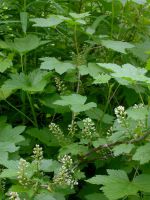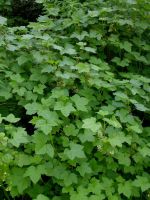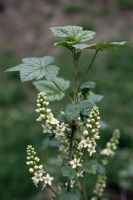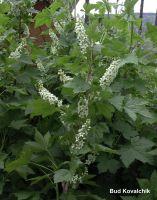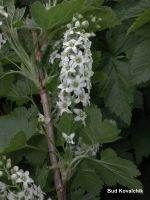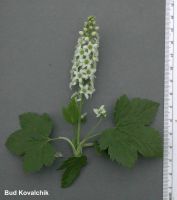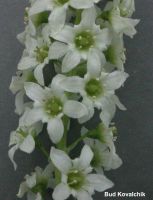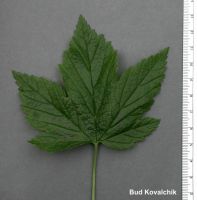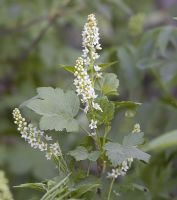Distribution: Occurring chiefly east of the Cascades crest in Washington; Alaska to California, east to the Rocky Mountains, Canadian Great Plains, Great Lakes region, and eastern Canada.
Habitat: Stream banks, moist woods and meadow margins at middle elevations in the mountains.
Flowers: May-July
Origin: Native
Growth Duration: Perennial
Conservation Status: Not of concern
Pollination: Bumblebees, bees, hummingbirds
Erect, unarmed shrubs 0.5-1.5 m. tall, glandular all over with sessile, round, yellow, crystalline glands, and with a characteristic odor.
Leaves alternate, palmately veined, broadly cordate, 3.5-9 cm. broad and nearly as long, usually hairy and pale on the lower surface; the blades primarily 3-lobed less than half the length into broadly deltoid and coarsely dentate segments, the two lower segments shallowly and unequally lobed.
Inflorescence of ascending, many-flowered racemes, up to 17 cm. long; pedicels slender, jointed, 3-8 mm. long; calyx white, thick-pubescent, the tube widely flaring, 1-1.5 mm. long, the 5 lobes triangular to ovate-lanceolate, 3-4 mm. long, widely spreading; petals 5, white, 1.5 mm. long, oblong; stamens 5, equal to the petals; styles 2, 2 mm. long, fused half their length; ovary about 2/3 inferior.
Berry sub-globose, 7-12 mm. long, black and glaucous, sessile-glandular.
Publication: Narr. Journey Polar Sea (ed. 2). 734. 1823.
Ribes hudsonianum Richardson var. petiolare (Douglas) Janczewski [HC]
Ribes petiolare Douglas
PNW Herbaria: Specimen records of Ribes hudsonianum in the Consortium of Pacific Northwest Herbaria database
WA Flora Checklist: Ribes hudsonianum checklist entry
OregonFlora: Ribes hudsonianum information
E-Flora BC: Ribes hudsonianum atlas page
CalPhotos: Ribes hudsonianum photos

